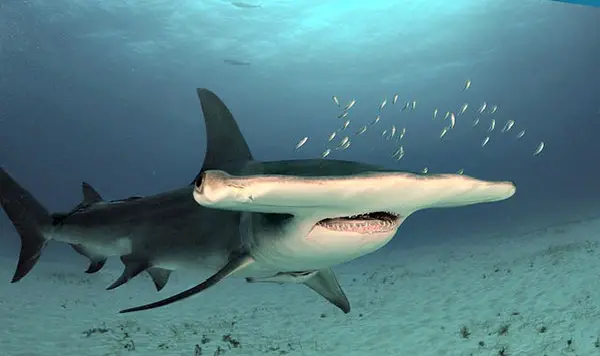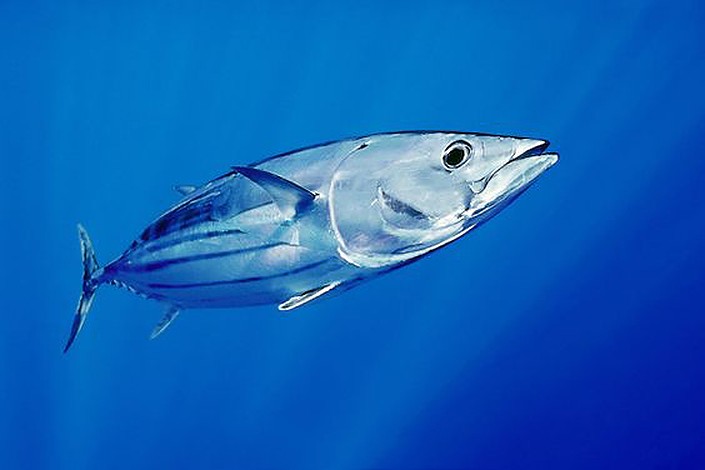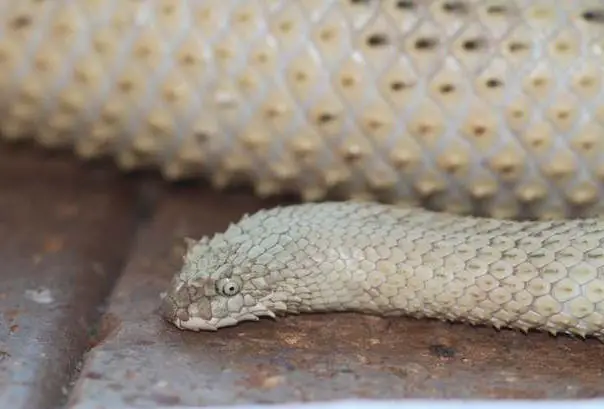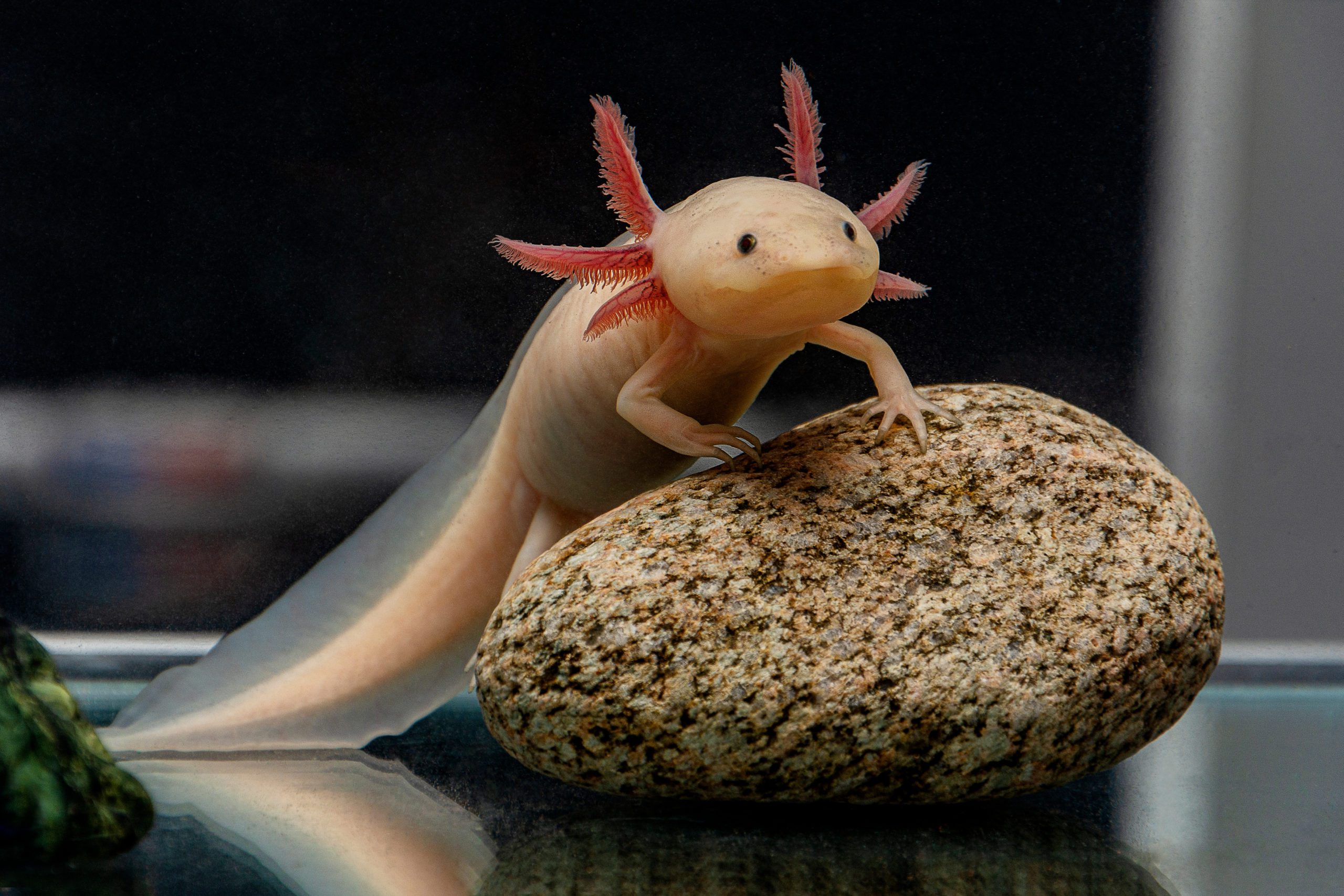The Salmon Shark (Lamna ditropis) is one of the most famous names in the oceanic and aquatic communities. These sharks can regulate their body temperature from 14 to 20 degrees of Fahrenheit above the surrounding water temperature. That is a fantastic endeavor, which makes this elasmobranch fish very popular. But that is only the tip of the iceberg. Its appearance is so unique that it makes many enthusiasts crave more information about this creature.
Identification of the Salmon Shark
The salmon shark has dusky gray skin. The lower part of its body has a paler gray color below the white marks. The anatomy of this resilient shark has made it one of the strongest swimmers in the oceanic environment. Its white tail has a double keel, which is unorthodox for other shark species. The males mature at five years old. Meanwhile, the females will grow at eight to ten years old. These sharks also have gill slits and large teeth, making them an apex predator that is most harmful to others.
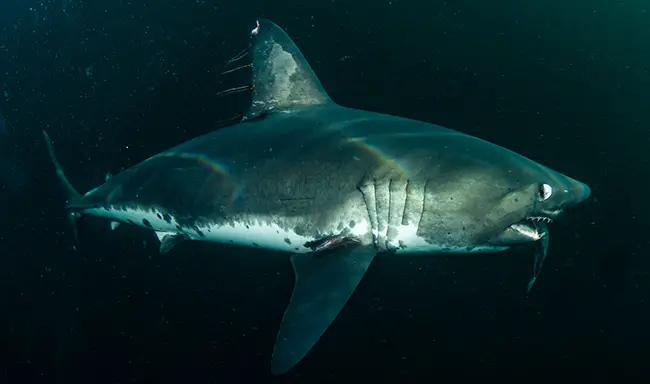
Salmon Shark Size
In the wild, salmon sharks can grow exponentially to ten feet long or more. However, the average size of this extraordinary creature is around six to eight feet.
Records collected from anglers show that the maximum weights of salmon sharks can whop around 660 pounds.
Baby Salmon Shark
The females can bear two to six babies after the incubation of nine months. The baby salmon shark size is around 84 to 96 cm in range length. The couples will spawn during the summer and autumn when the water conditions trigger their mating behavior. And they will likely litter in the spring.
The male will bite their couple while inserting their clasper into their mate’s cloaca. The mating could happen a few times during the season. The females will protect the eggs within their bodies. The soon-to-be-born babies live in their mother’s brood chamber and develop until they are ready to hatch. They receive pure nutrients from their eggs’ yolks. The babies hatch from the eggs inside the uterus of their moms. In a quick phase, they will come out of the uterus soon after being born.
Salmon Shark Alaska
Speaking of the availability of the salmon shark, it has been concentrated in coastal and oceanic habitats in the North Pacific Ocean. They are spread around the North Pacific from the Bering Sea to the western Pacific. The hordes are visible from the Gulf of Alaska to the eastern Pacific.
The temperature the fish prefer to live in is around 2 to 24 degrees Celsius. The depth of the sea is at least 500 feet. They are more prevalent in offshore waters, although sometimes anglers can see them dwelling in coastal areas.
The nourishing North Pacific with abundant protein sources has made the population of this fantastic species more stable. Hobbyists and avid anglers don’t need to worry when exploring the oceanic area for salmon shark sport fishing activities. There are also dozens of charter services that you can use in Alaska.
In the Alaska Northeast Pacific area, these fun creatures are dwelling at low levels. But a commercial fishing ban in the region has succeeded in controlling the abundant population of fish. The population is stable thanks to the regulations.
In the Alaska federal waters, bycatch is allowed. The sportfishing regulations in Alaska have managed ethical sport fishing in the living habitat of the fish. TAC-Total Allowable Catch is the specification to follow. There are only two sharks per person per year. But one is allowed a number for possession at any time.
The drift gillnet fishery is not allowed anymore to protect the populations of fish. The most typical fishing is noted in the Bering Sea. Many anglers catch the fish in the Alaska state salmon fisheries or nearshore waters. The number of catches is low, which makes it more interesting for the huge fans of the fish.
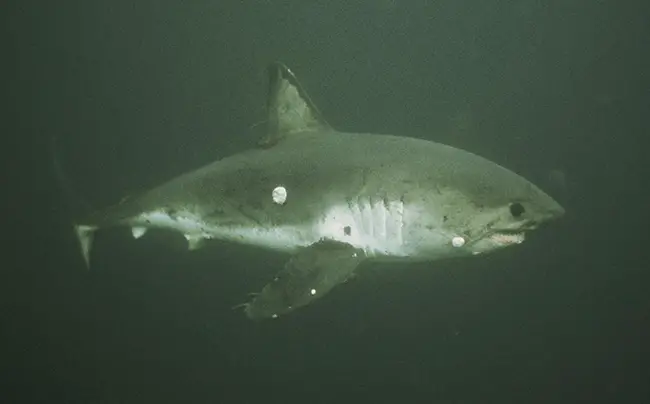
What salmon shark eats?
Just like the other shark species, the salmon shark is an apex predator. They feed on smaller fishes like herring, squid, salmon, pollock, and many others. Sea otters and marine birds are also their favorite sources of food.
They are deadly hunters who are feared by most dwellers living on the same water levels.
The word “salmon” was earned from their favorite food-salmon. Thanks to this behavior, these sharks hold the title of “salmon shark.” But when they can’t find salmon on the day of hunting, they will eat anything that can fit in their mouth.
Perhaps you’ve heard somewhere that these sharks also eat humans. But it is false information. You may see it in fiction books or movies, but not in real life. Salmon sharks do not eat humans. So, you don’t need to worry. But there’s a possibility that they can attack humans. There have been records of common sharks attacking humans. But in the entire history, there is no single record showing that salmon sharks attacked humans.
According to the authorities, attacks on humans have been reported, but not directly. The encounters with salmon sharks were when these sharks bumped into the anglers’ boats or vessels. There is no report of a direct attack on humans.
Where do salmon sharks live?
These sharks live in coastal waters and the open ocean. The live reports about their activities concentrate on the North Pacific Ocean area. Many anglers and researchers have reported sightings in many North Pacific Ocean areas.
If you have wondered if these fishes can live in freshwater, then the answer is a YES. These amazing sharks can also live in freshwater. They can survive in freshwater thanks to their natural salt retention abilities.
Salmon Shark Predators
As mentioned, the salmon shark is an apex predator in its area. It has a great sense of smell, locating, and attacking. A good vision gives them the most advantages in dominating the ocean.
Even the quiet fishes won’t be able to remove their traces. These sharks can detect the electromagnetic fields coming from swimming fishes and other sea creatures.
Left alone, the electromagnetic fields also can detect electrical fields from the weakest to the strongest. The experts have slated this ability as the sharks’ sixth sense. They can track down their prey. So, no matter where they go, the sharks will be able to trace them down.
Salmon sharks have large and smooth teeth. The series of teeth is an effective weapon for biting and shredding their prey into pieces.
Salmon sharks’ favorite hunting spot is in deep water. They tend to look for the top places where their prey is going to mate or spawn. Salmons, who live in groups, are the perfect prey for these sharks.
They will observe the areas, do the valuation, and hunt the salmon in groups or packs. It is similar to hyenas, which track their prey in groups, or wolves who hunt their weaker prey. They often jumped out of the water to pursue the salmon.
They have aggressive behavior towards other dwellers, including their prey. But it is rarely reported that they are aggressive towards humans. They tend to be ignorant or indifferent when they sense the human presence in the water. It might be different if humans held salmon, their favorite prey. Around 2,000,000 salmon sharks are hunting in the North Pacific Ocean. I know that it is a huge number to count. However, the number is still debatable. The population in Alaska seems to be abundant and safe, thanks to the strict regulations on sport fishing.
Are Salmon Sharks Dangerous?
The salmon shark, just like other sharks, is not something that regular humans want to befriend. Its natural aggressive behavior has been deemed potentially dangerous for every man without extensive experience interacting with the particular creature. Unless you are a shark whisperer, you will want to make a great distance when diving into the areas.
Sharks don’t eat humans. Although there have been reports of sharks attacking humans, there is no single report of a salmon shark direct attack. Some reports indicated that they bumped into the anglers’ boats. But that was it. They are naturally dangerous to humans. Therefore, one must carefully pay attention to the safety measurements when doing sport fishing in the allowed zones.
In general, sharks are indifferent to humans. They don’t see humans as beautiful objects to approach or hunt. However, the risks can increase when humans disrupt the fish territories. In records, shark attacks happened accidentally. Humans are not essentially in their diet plan.
They are indeed potentially dangerous to humans. But just like other sharks, salmon sharks tend to have more fear of humans than humans have a fear of them. Their scary looks might be terrifying for us. But in real life, humans are the ones who hunt them for their flesh and skin.
Habitat Difference
These animals inhabit the same place as other animals in the sea. But there are gender differences in their habitats. The males tend to spend most of their time in the northwestern Pacific. Meanwhile, the females tend to stay more in the Northeastern Pacific.
But both genders of sharks can be seen anywhere in the North Pacific, especially during the mating seasons. These creatures inhabit the same place, just like other creatures who protect their groups from predatory animals. They stay together to bond and reproduce. There is a possibility that they prey on each other like other shark species.
Salmon sharks are related to great white sharks. That explains why their appearances are as intimidating as their relatives. It is seldom to see them in freshwater. But they can indeed survive in freshwater since they don’t entirely rely on salt for survival. Knowing that these sharks can live in freshwater areas might be a scary enough reason for you to avoid Alaskan lakes and rivers. However, it would help if you remembered that they don’t list humans in their diet plan.
Fishing of the Salmon Shark
Regardless of the predatory characteristics, many people are fond of these creatures’ traits. The commercial fishery for salmon sharks has been there for almost 30 years. The first and foremost observatory for these sharks is Prince William Sound. It proposed the idea of making these sharks a commercial thing back in the mid-90s. Back then, fishers could use a set of gear to catch around five dozen sharks in one go.
But then, the Alaska Board of Fisheries shut down the commercial fishery and issued strict regulations on the state sport fishery in 1997 because there had been still room to explore this fish species.
The sportfishing for salmon sharks is regulated legally in some areas. As you browse around the net, it will be easier to find information about sport fishing charter providers who offer services for salmon shark angling. There have been significant increases in the number of salmon shark anglers since the 2000s.
Thanks to the predatory characteristics of sharks, many anglers are more challenged by their aggressive nature, resistance challenges, and large sizes. Many charters offer different services for anglers. Shark flesh can be the result of sport fishing. But it is recommended to learn all of the basics of salmon shark gutting. Wrongly processed salmon shark flesh won’t feel tasty at all.
In many countries, the cooked flesh of these species is ordinary in dishes. There are many commercial products made of flesh revolving across the globe. In Japan, for example, all the consequences can be used for popular dishes like sashimi, sushi, ramen, donburi, etc. Skins are also used for producing oil and other food products.

